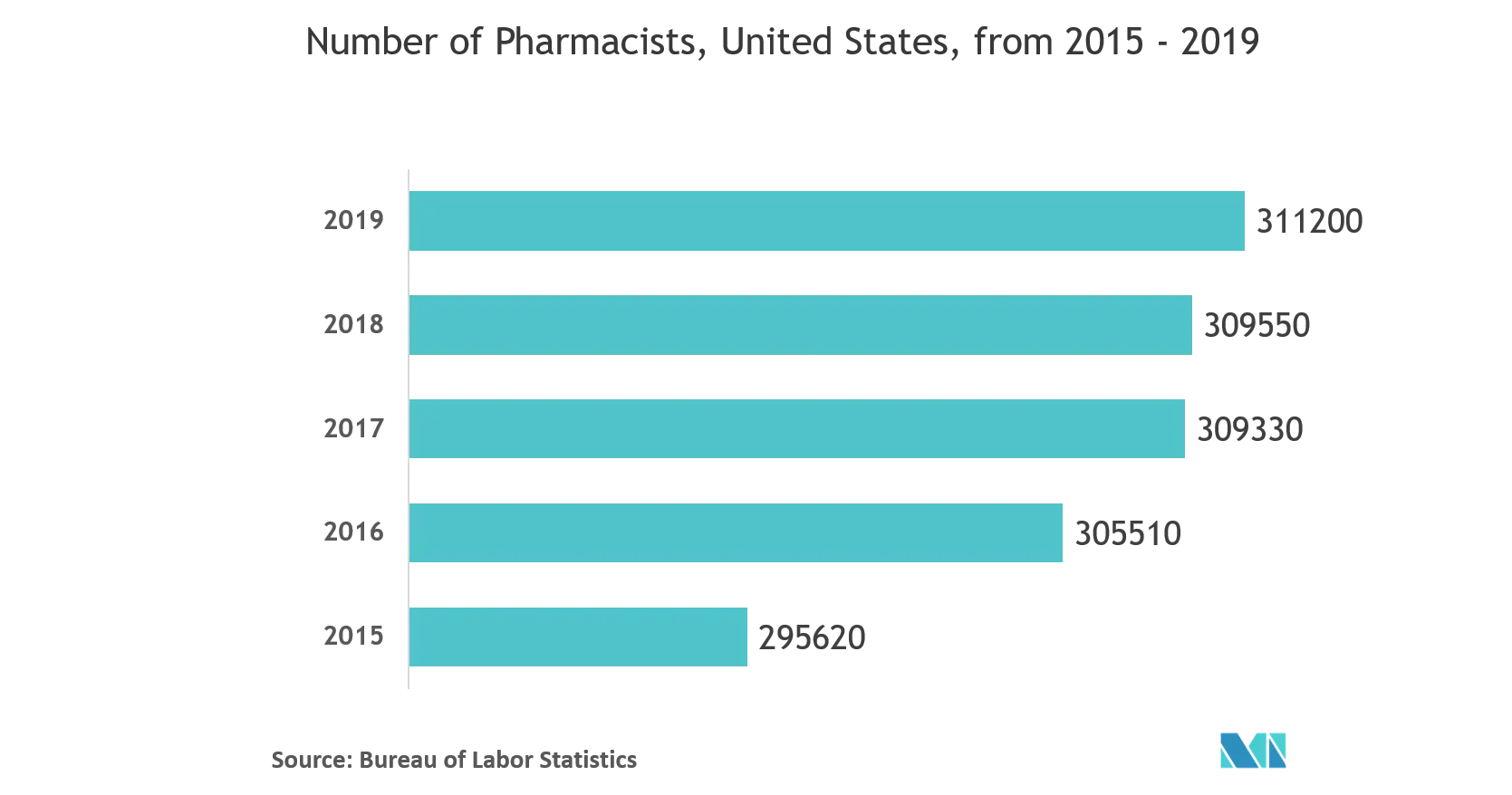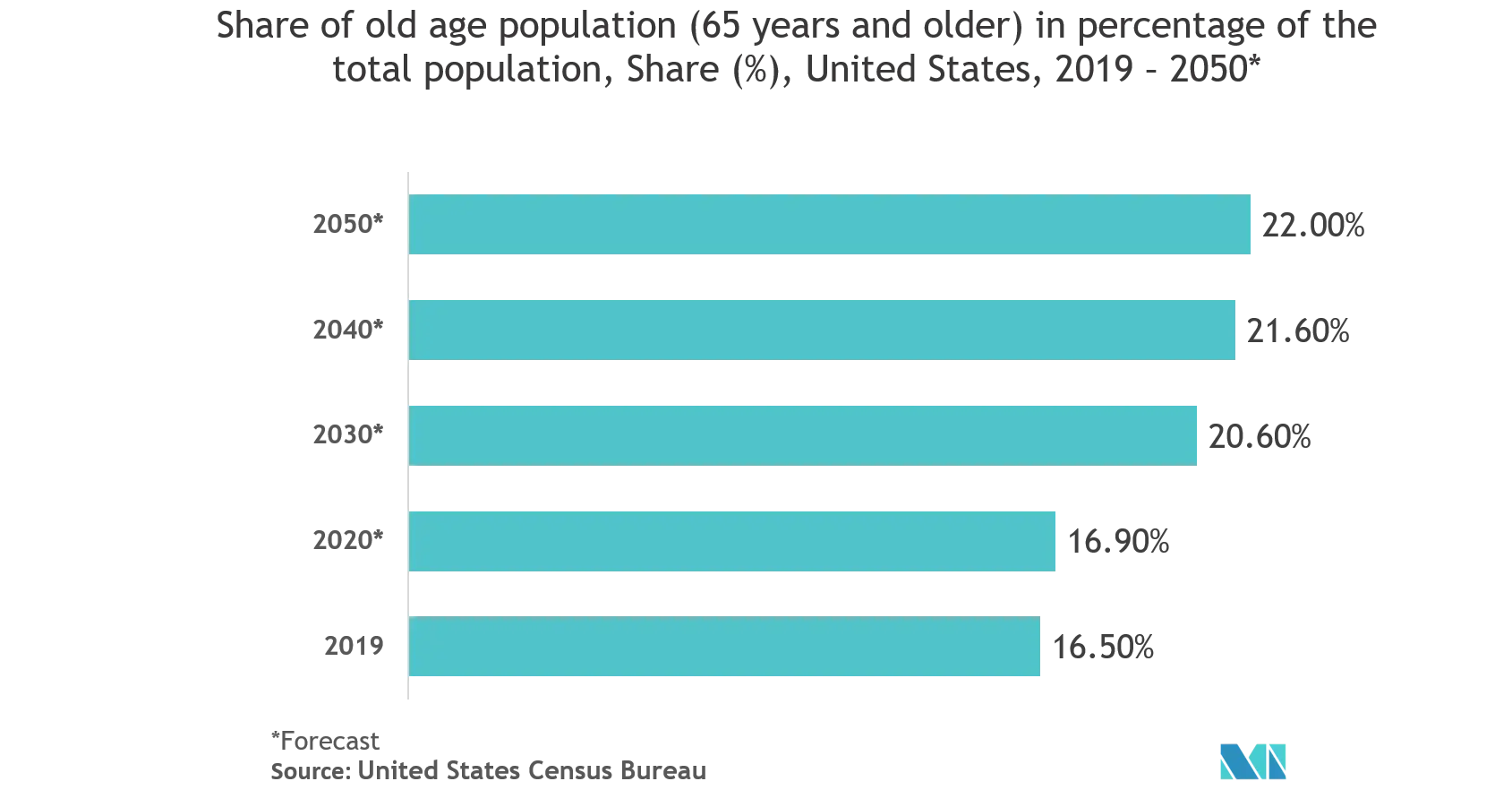Market Trends of North America Pharmaceutical Packaging Industry
This section covers the major market trends shaping the North America Pharmaceutical Packaging Market according to our research experts:
Blister Packaging is Expected to Hold a Significant Share
- Blister packaging is mostly used to provide barrier protection from moisture, gas, light, and temperature and longer shelf life. Blister packaging helps retain product integrity as drugs that are pre-packed in blisters are shielded from adverse conditions. Blister packs are mainly used for packaging pharmaceutical products, such as OTC drugs and medicines (capsules), and small medical devices.
- The growing demand for the pharmaceutical industry is one of the primary drivers of the blister packaging demand in the North American region. The implementation of FDA regulations that require that all prescribed pharmaceuticals that are dispensed in hospitals and nursing homes are to be packaged in unit-dose formats, including barcodes to reduce the dispensing errors, has also increased the sales of blister packs over the past few years.
- In the United States, blister packaging is used for products that are not behind the prescription counter, such as allergy medication or chewing gum. The US retailers and consumers are catching up with the rest of the world when it comes to packaging prescribed medications. The demand for blister packaging is increasing in the country.
- The US pharmaceutical market is among the world’s most important national markets. The United States alone holds over 45% of the global pharmaceutical market. It is expected that almost USD 60 billion is spent annually on pharmaceutical R&D purposes in the country.
- Pharmaceutical companies are stringent about their policies regarding drug safety and effectiveness of drug packaging, and this, in turn, is leading to an increase in pharmaceutical packaging such as blister packs, thereby, driving the market’s growth positively.

United States is Expected to Account for Major Market Share
- The United States dominates the pharmaceutical market, both in consumption and development. According to STAT, prescription drug spending in the nation is considered to add up to USD 600 billion by 2023, up from an estimated USD 500 billion in 2019, which is further expected to drive the market for pharmaceutical packaging in the country.
- The United States dominates the North American market for pharmaceutical packaging, due to the significant presence of global players, like Amcor PLC, Becton, Dickinson, and Company, McKesson Corporation, etc. These companies cater to some of the largest pharmaceutical companies, like Abbott, Pfizer, Roche, and Novartis. These pharma companies provide both domestic and international customers from their North American facilities.
- Moreover, the increasing population under the age group of 0-9 years is estimated to drive the demand for pharmaceutical syrups, which would, in turn, reflect the growth of glass bottles consumption. According to the United States Census Bureau, in the United States, the population under 0-9 years age group was 40.01 million in 2019.
- Furthermore, in United States, the growing aging population, as a result of increased life expectancy rates across regions, is creating the scope for medical device manufacturers and the pharmaceutical sector as a whole, in turn driving the demand for packaging of these products.
- Since the United States is one of the largest consumers of pharmaceutical products and depends on imports for API and finished products, the prolonged periods of lockdown due to the spread of COVID-19 may also negatively affect the US market.
- With the growing demand for glass vials, ampoules and containers in the country, the overseas companies are seeking to seize the expansion opportunity in the country. For example, in August 2019, Arglass Yamamura LLC from Japan announced to invest over USD 123 million to build a manufacturing plant in south Georgia. With this expansion, the company has planned to use its latest glass-forming technology.
- Additionally, as the United States is facing costly pharmaceutical imports from other countries than Canada, the US government authorized a pilot project for wholesalers and pharmacists to import versions of FDA-approved medicines from Canada. On the continuation of this plan, the demand for glass packaging for pharmaceuticals in Canada is expected to rise significantly in the coming years.


